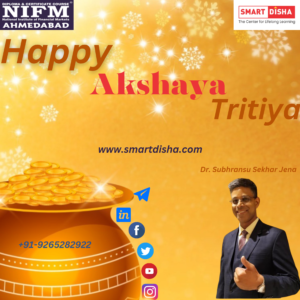Dussehra, also known as Vijay Dashami, is one of the most celebrated festivals in India. It marks the triumph of good over evil, symbolizing the victory of Lord Rama over the demon king Ravana. The festival carries immense mythological and cultural significance, but what lessons can modern Indian youth draw from this ancient tradition for a healthier, wealthier, and more peaceful life? In this blog, we’ll explore the significance of Dussehra and Vijay Dashami and delve into seven valuable lessons that the festival imparts.
Significance of Dussehra and Vijay Dashami:
- Victory of Good over Evil: Dussehra symbolizes the triumph of good over evil. It is a reminder that no matter how powerful darkness may seem, goodness and righteousness will ultimately prevail. Modern Indian youth can learn that integrity and moral values are essential for success.
- Lord Rama’s Exemplary Life: Lord Rama’s life, as depicted in the epic Ramayana, serves as an example of ideal conduct. His unwavering devotion to truth, duty, and dharma can inspire today’s youth to uphold these virtues in their lives.
- Celebrating the Inner Light: Dussehra encourages individuals to recognize and celebrate their inner light or divine qualities. Modern Indian youth can embrace self-awareness and self-improvement, realizing their full potential.
Mythological Significance for Modern Indian Youth:
- Moral Values: Dussehra teaches the importance of moral values, ethics, and righteousness. Modern youth should learn from Lord Rama’s adherence to dharma and apply these principles in their personal and professional lives.
- Courage and Perseverance: Lord Rama’s unwavering determination to rescue Sita from Ravana’s clutches signifies the importance of courage and perseverance. Modern youth can face challenges with resilience and determination, working towards their goals.
- Triumph of Truth: The festival underscores the supremacy of truth. Young Indians should prioritize honesty, transparency, and authenticity in all their endeavors to attain lasting success.
Why is it called Dussehra?
The term “Dussehra” finds its origin in the Sanskrit language. It is derived from “Dasha Hara,” where “Dasha” means “ten,” and “Hara” means “defeat.” The name symbolizes the defeat of the ten-headed demon king Ravana by Lord Rama. Therefore, Dussehra marks the day of Ravana’s tenfold defeat, showcasing the triumph of good over evil.
The significance of the ten heads of Ravana in the context of Dussehra is deeply symbolic in Hindu mythology. Each of Ravana’s ten heads represents various aspects of his personality and characteristics, and these heads are associated with different vices and negative qualities. The defeat of Ravana and the symbolism of the ten heads carry several profound messages:
- Arrogance: Ravana’s ten heads symbolize his excessive pride and arrogance. He believed himself to be invincible, which ultimately led to his downfall. The destruction of his ten heads represents the defeat of arrogance and the importance of humility.
- Ego: Each head also represents Ravana’s inflated ego. His ego was so enormous that it blinded him to the consequences of his actions. Dussehra serves as a reminder to check one’s ego and remain grounded.
- Lust: Ravana’s insatiable desire for Sita, Lord Rama’s wife, is a prominent theme in the Ramayana. This excessive lust and lack of restraint is one of the vices symbolized by his ten heads.
- Anger: Ravana’s uncontrolled anger and impulsiveness are also represented by his ten heads. He often made rash decisions in fits of rage, which led to his own undoing.
- Attachment: Ravana’s attachment to worldly possessions, power, and desires is another aspect symbolized by the ten heads. His attachment to material wealth and power blinded him to the consequences of his actions.
- Jealousy: Ravana’s jealousy of Lord Rama’s virtue and righteousness is another vice that his ten heads represent. Jealousy can lead to unethical behavior and strife.
- Deceit: Ravana’s deceitful nature is symbolized as well. He used trickery and deception to achieve his goals, which ultimately backfired on him.
- Greed: Ravana’s insatiable greed for power and possessions is another vice embodied by his ten heads. This greed led him to commit heinous acts and create conflict.
- Cruelty: Ravana’s cruelty is symbolized in his willingness to harm innocent beings. His ten heads represent the heartless and ruthless nature of his actions.
- Impiety: Ravana’s lack of piety and disregard for divine principles is also signified by his ten heads. He did not respect the gods or divine laws, which ultimately contributed to his downfall.
The ten heads of Ravana, in their defeat by Lord Rama, represent the triumph of virtue, righteousness, and morality over these vices and negative qualities. Dussehra serves as a reminder that one should strive to overcome these negative traits and lead a life guided by principles of goodness, humility, and moral values. It is a celebration of the victory of good over evil, where the ten heads of Ravana symbolize the defeat of these various facets of darkness and the eventual establishment of righteousness.
Seven Lessons to Follow for a Healthy, Wealthy, and Peaceful Coexistence:
- Embrace Goodness: Just as Lord Rama represented goodness, youth must embrace qualities like kindness, compassion, and empathy, fostering harmonious relationships.
- Uphold Moral Values: Uphold values like honesty, integrity, and respect for others. These virtues are the foundation of a prosperous and peaceful life.
- Face Adversity with Courage: Be courageous in the face of challenges and obstacles, persisting until you achieve your goals.
- Prioritize Truth: Honesty is the bedrock of trust. Build trust with others by being truthful and authentic in your interactions.
- Respect Diversity: Diverse backgrounds and beliefs make India rich. Celebrate diversity and practice inclusivity for peaceful coexistence.
- Self-Reflection: Like the festival’s call for introspection, self-awareness can lead to self-improvement and personal growth.
- Lead by Example: Modern Indian youth should lead by example, inspiring others to follow the path of righteousness, ethics, and moral values.
Dussehra and Vijay Dashami hold profound significance in Indian culture, offering invaluable lessons for modern youth. By embracing these teachings, the youth can lead healthier, wealthier, and more peaceful lives while contributing to the betterment of society. This festival serves as a timeless reminder of the enduring power of good over evil and the importance of upholding moral values and dharma in our lives.
Happy Vijay Dashami and may your life be filled with success and contentment!
Jai Hind
Team
Smart Disha Academy
NIFM Ahmedabad
Smart Disha Algo
No.1 Stock Market Trading Training Academy
Success Mantra at Smart Disha
“Invest FIRST in YOURSELF To Learn STOCK Market”
Starts from Very Basic To Advance Level !!!
Registration is must due to limited Seats.
For Training : 92652 82922
For Algo : 94088 56780 ( Only WhatsApp )
Act opening on IIFL (Rs 5 Per lot ) https://cutt.ly/gGSQ1sV
For News Update Join https://shorturl.at/asxzP
For Research and Algo Study Join https://shorturl.at/dhquw
For Daily Algo Updates https://shorturl.at/DILP3
For Discussion on Algo https://shorturl.at/kNR12
#HappyDusshera #HappyDurgaPuja #AdvanceTradingCourse #StockMarketAdvancedCourse #AdvancedTradingCourses #SmartDishaAlgorithm #NIFM #NIFMAhmedabad #SmartDisha #Algo #TechnicalAnalysis #PriceAction #PriceActionTrading #PriceActionStrategies #Candlestick #CandleStickPatterns #StockExchangeCourse #Nifty #BankNifty #OnlineClasses #OnlineClassroom #ShareMarket #StockExchange #Stock #Trading #Finance #StockTrading #StockMarkets #Traders #OnlineLearning #AlgoTrading #FundamentalAnalysis #OptionTrading #IntradayTrading #NCFM #NISM #StockMarketTraining




